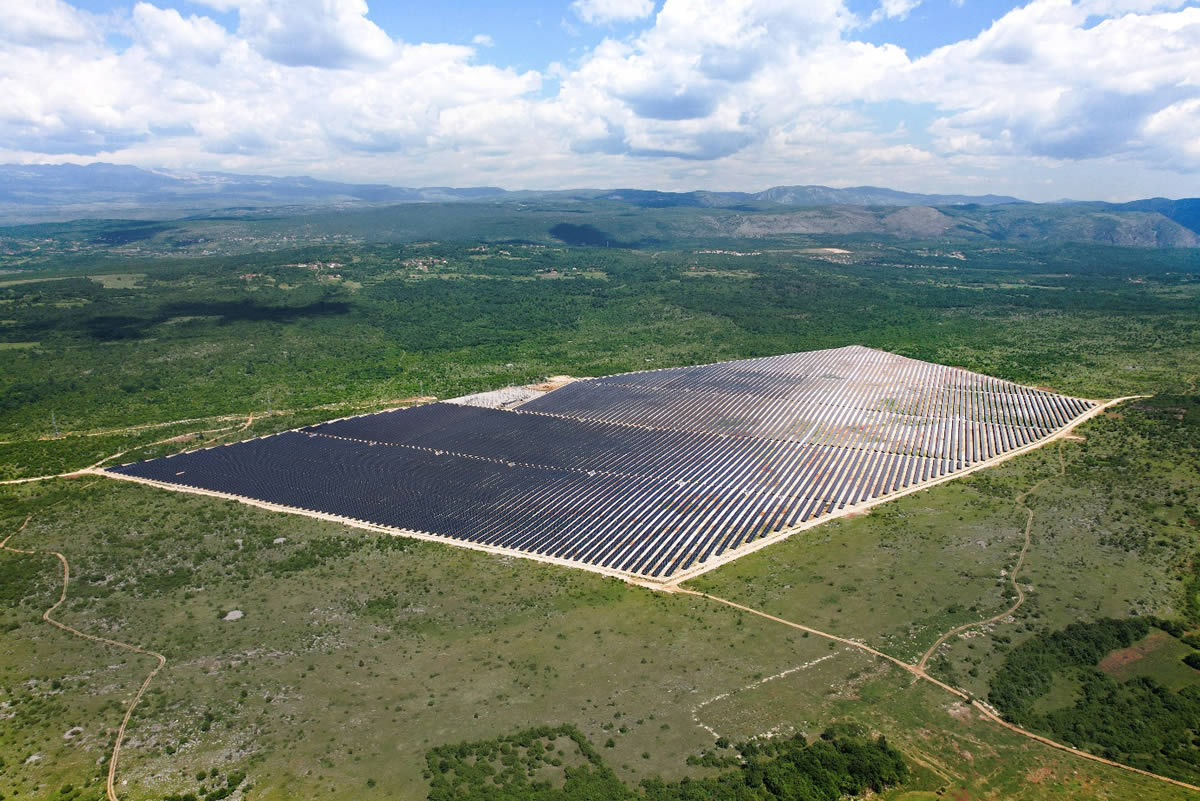AIKO Powers Europe’s First Grid-Connected Utility Plant with N-Type BC Modules
June 4th, 2025
Stolac Solami Park in Bosnia and Herzegovina marks a major milestone as AIKO and Tibra Pacific achieve grid connection of Europe’s first Back Contact-based utility-scale solar project.
AIKO, a global leader in high-efficiency solar technology and the inventor of N-Type ABC (All Back Contact) technology, is proud to announce the successful grid connection of the Stolac Solami Park photovoltaic plant in Bosnia and Herzegovina. Developed by Tibra Pacific, the project has entered full operation and is now supplying clean solar power to the regional grid.
With an installed capacity of 64 MW using AIKO modules, Stolac Solami Park forms a key part of the largest grid-connected ground-mounted PV installation in Bosnia and Herzegovina to date. Originally launched in 2024, the project adopted AIKO’s Stellar 1N+ ABC modules, selected for their industry-leading efficiency and long-term reliability. The system is built on a fixed-tilt structure with an optimized layout to maximize land use.
“This project marks a milestone for renewable energy in Bosnia and Herzegovina,” said Robert Brajkovic, Chairman of Tibra Pacific. “As the country’s largest operational ground-mounted PV plant, we needed technology that performs not just in labs, but on-site. AIKO’s modules delivered 12% more energy output and helped reduce electricity costs by 3% in the first phase, compared to the TOPCon setup. As a result, we transitioned the entire second phase to ABC. Their No.1 efficiency and consistency in real-world conditions set a new benchmark for us.”
Long-Term Energy Yield Advantage
A 30-year simulation comparing AIKO’s ABC modules with reference TOPCon systems revealed a consistent performance edge:
- Total energy generation (AIKO ABC): 2,564.35 GWh
- Energy gain over TOPCon: +38.54 GWh (+1.54%)
- First-year yield improvement: +0.80%, with a widening gap over time
This long-term performance advantage translates into higher system output and improved energy security over the plant’s operational life.
Higher Land-Use Efficiency and System Simplification
Thanks to its superior power density and larger active module area, the ABC system requires:
- Fewer modules per installed megawatt
- Fewer strings and simplified DC design
- Reduced racking materials, installation components, and wiring
These factors not only improve overall land utilization efficiency — especially valuable in terrain-constrained or cost-sensitive areas — but also reduce the carbon footprint, as fewer components and containers are needed. The result is a more compact, streamlined system with easier logistics and reduced physical complexity.
Cost and Financial Advantages
In addition to technical performance, AIKO’s ABC modules delivered clear financial benefits:
- Payback period advantage:
◦ AIKO ABC: 16 years, 4 months
◦ TOPCon: 17 years, 3 months - Lower LCOE, due to higher energy yield and reduced balance-of-system (BOS) costs
- Improved ROI over project lifetime
These combined advantages make the ABC system a more bankable and economically efficient choice for utility-scale developers aiming to maximize long-term value.
Built for Tough Conditions
Engineered for performance in harsh and variable conditions, AIKO’s modules demonstrated outstanding durability under the installation stress, temperature swings, and mechanical loads typical of the project site. The full-screen ABC design also enhances micro-crack resistance and suppresses hot spots more effectively than conventional technologies.
Furthermore, the standardized 2382×1134mm size and 30mm thickness ensure compatibility with mainstream mounting systems and future-proof design flexibility.
Powering the Green Transition in Southeast Europe
Stolac Solami Park is more than a utility-scale project — it’s a symbol of regional commitment to clean energy. By deploying advanced PV technology at scale, the project supports Bosnia and Herzegovina’s energy diversification goals and provides a real-world example of how innovation can accelerate the global transition to a zero-carbon future.












